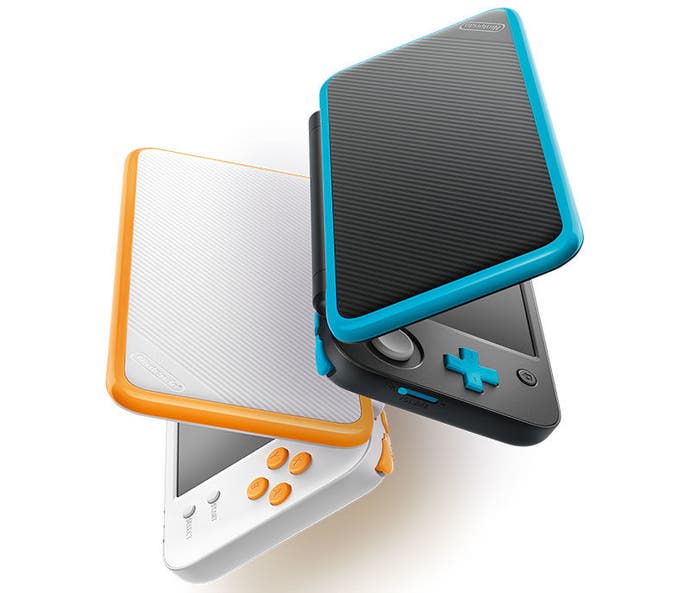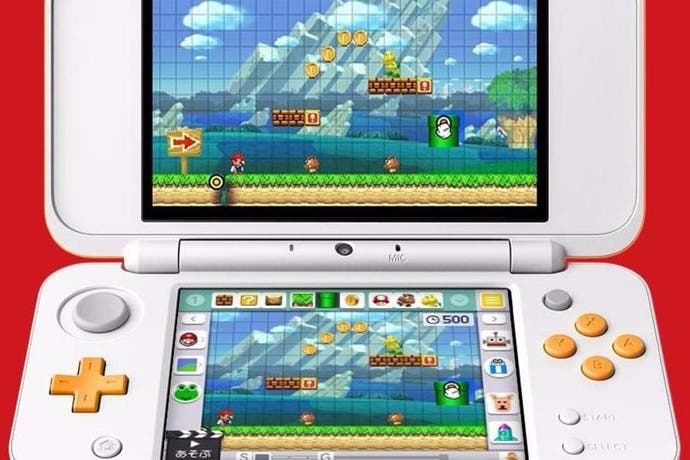The appeal of Nintendo's new handheld play is plain to see
First impressions of the 2DS XL, a potential full stop to Nintendo's amazing dual-screen era.
The timing was strange, to say the least. Nintendo had asserted that its line of dedicated handhelds wasn't necessarily over now that its new hybrid was on the market and doing rather well, but no-one quite expected its commitment to be underlined so soon. Yet mere weeks after the Switch hit shelves - where it hasn't lingered for long, thanks to a healthy appetite for the system - the New 2DS XL was announced, with the unit launching at the tail-end of July. Nintendo's famed for its eccentricity, but this announcement came across as extra odd.
What to make of the New 2DS XL, then? In terms of putting it in the context of past Nintendo hardware we've been here before, of course. When the successful Game Boy line was given a last hurrah with the Game Boy Advance Micro, released a full year after Nintendo's next generation of handhelds was launched with the original DS. What a last hurrah it was, too, a late play for the lifestyle audience resulting in a stylish device as desirable now as it was back in 2005.

The New 2DS XL is just as wonderful to behold as the Micro, even if it's fulfilling a very different brief. The original 2DS, launched back in 2013, was aimed at a younger audience, the omission of 3D a by-product of the company's drive to create a cheaper alternative to its more sophisticated sibling. The absence of a hinge - a potential weak spot that small, curious fingers might unintentionally stress-test - and a move from the familiar folding form to a one-piece moulded chassis made the unit sturdier, and also more toy-like in appearance. It was an optional, additional console for rumble-tumble tots and a convenient alternative to having them handle the heavier, premium 3DS models owned by their older siblings or parents.
A return to the clamshell design makes the New 2DS XL more discreet and conventionally attractive than the standard model. The New moniker assures that it can play the handful of titles previously exclusive to New 3DS and New 3DS XL, such as Xenoblade Chronicles 3D, The Binding of Isaac: Rebirth and, er, Pirate Pop Plus. And with the inclusion of familiar 3DS features like an Amiibo-friendly internal NFC reader, additional ZL/ZR shoulder buttons and C-stick nubbin, plus screen sizes that match the 3DS XL, the New 2DS XL looks to be a everything its older sibling is without that console's headline 3D feature (official tech specs aren't forthcoming just yet, though it seems likely it'll be built around the same 804MHz quad-core and 134MHz single-core processing chipset from the 2015 New 3DS line, while the push for a cheaper price suggests a dual TN screen set-up).
Evidently, 3D is a heavy concept - or at least the tech required to produce its effect is. The 2DS XL comes in at just shy of 80g lighter than 3DS XL. This lends the latter a premium heft that we're conditioned to expect from quality components but the 2DS XL nonetheless avoids that tacky, hollow plasticky feel and is very well balanced.
The weight-loss is noticeable when playing titles that require a mix of control pad and stylus. With the unit nestled into one hand and the stylus in the other while testing out Hey! Pikmin it remained comfortable and there seemed little potential for wrist strain over an extended session.
Mention of stylus control does raise the first sticking point with the console, though. At just over 2.5inches long, the non-extendable stylus feels very small; smaller even than the retracted form of the original 3DS telescopic stylus. This gives it the feeling of a pencil that's been worn down a bit too far and must be lightly gripped between thumb and forefinger rather than sitting in the crook of your hand. We're told that size isn't everything but this dramatic shortening of the stylus is pronounced enough to be noticeable, no matter how polite I'm being. Certainly, the New 2DS XL body is smaller overall than the New 3DS XL's, but not so dramatically that over an inch needed to be lopped off the pointer.

Zipping around the rest of the unit, the diddy stylus is housed in the bottom of the unit, just off-centre, next to the 3.5mm headphone jack and near the power button and LEDs. The bottom-left of the 2DS XL has a pull down flap that protects both the easily accessible cartridge and SD card slots (no screwdriver required). Volume slider is on the left, dual camera lenses reside on the back of the bottom portion of the console - as opposed to the top "lid" portion as is the case with the 3DS XL - and the 3D slider is, of course, non-existent.
The hinge, which initially looks more prominent than that of the 3DS when the unit is closed is, I think, simply more rounded and consequently more noticeable than the flat-topped variant of its compatriot. Combined with the fact that it doesn't run the entire length of the console makes it more noticeable at first glance. The top-screen's three natural resting points when the lid is opened match those of the 3DS XL, although there was a feeling on the four test units that I experimented with that there was greater capacity for give or slight wobble between the second and third positions than the sturdier 3DS XL screen.
The New 2DS XL measures up in the all important hands-on tests, which leaves those all-important questions of who it's for and why it's here. Nintendo insists that its line of dedicated handhelds isn't necessarily going to come to an end now that the Switch is here, though it's worth remembering similar overtures were made about the Game Boy brand when the DS was first launched - and, of course, the internal shake-up at Nintendo in 2013 that consolidated the company's handheld and home hardware divisions, laying the groundwork for the Switch, suggests it's perfectly happy to straddle both worlds.
Take all that into account and the New 2DS XL feels like an attractive full stop to the dual-screen generations that Nintendo kickstarted with the DS in 2004, and as a new entry point into that era it's not hard to see the appeal. There's 13 years of exceptional games that can be played on this new handheld (as well as the promise of a few more to come with the likes of Fire Emblem Echoes and Ever Oasis due in the coming months), and as a new chapter in Nintendo's history begins an old one is drawn to a close with some style.


